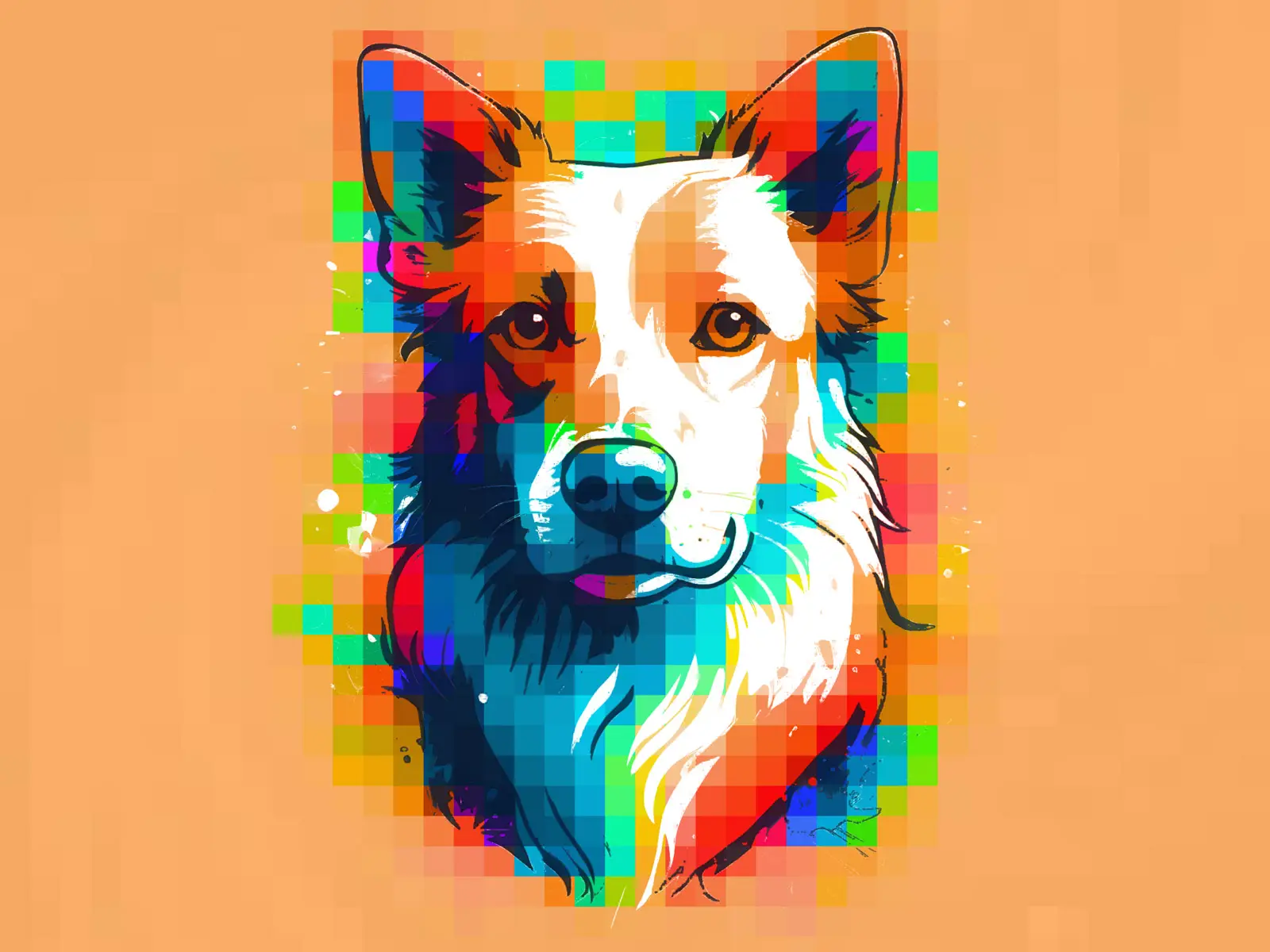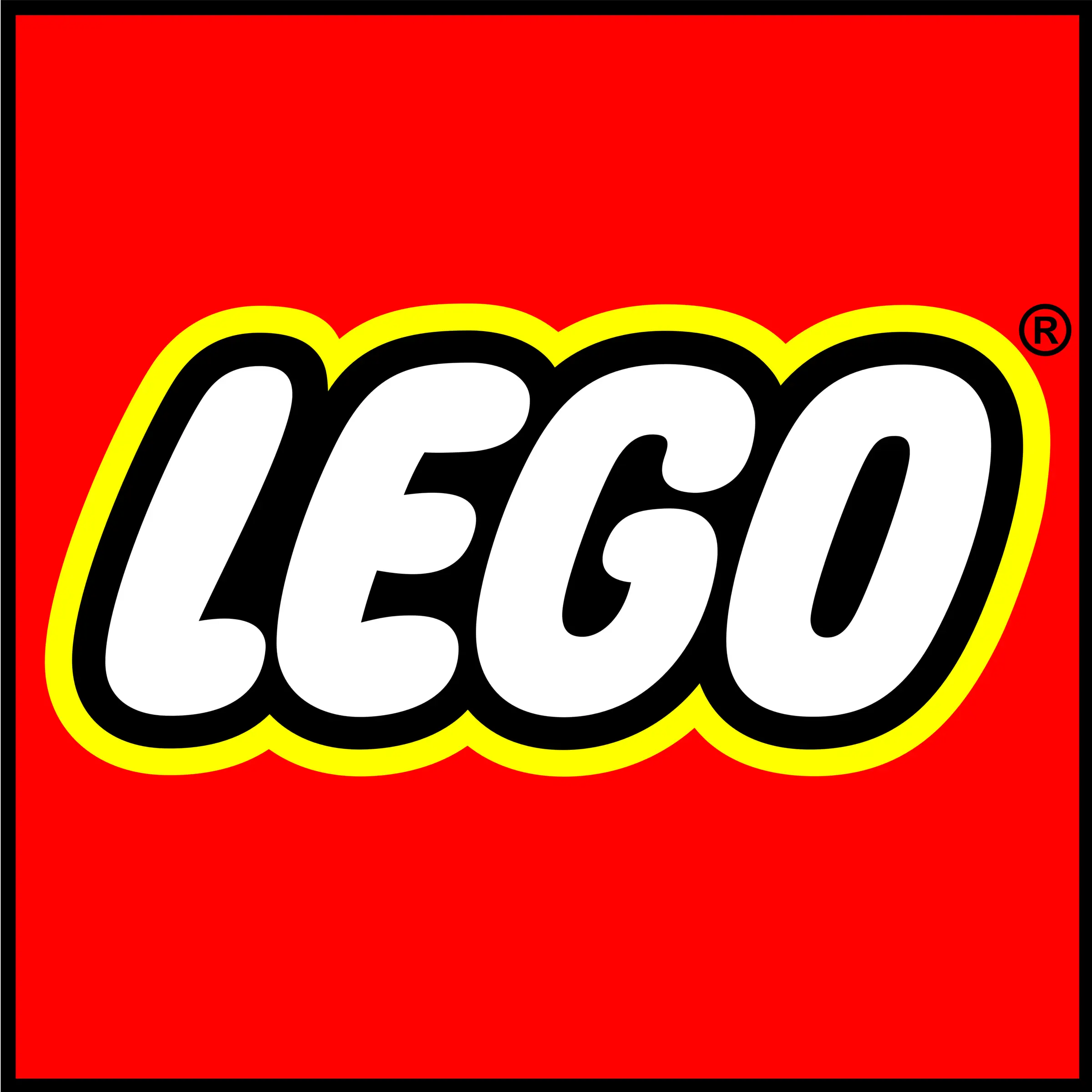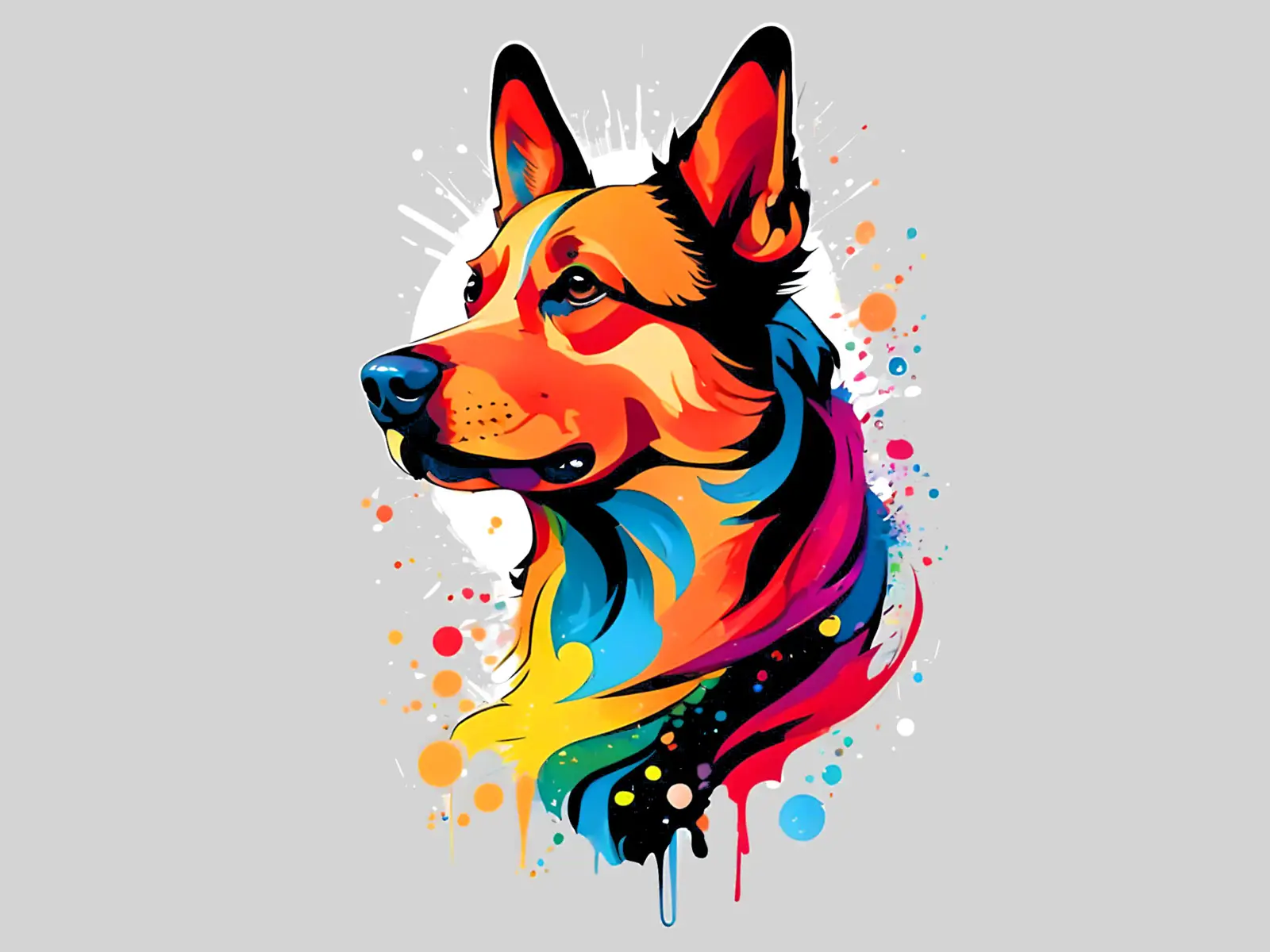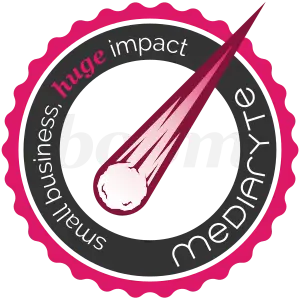
Overview: Discover why your logo is the beating heart of your brand and learn how to create a small business logo design that captures your company's unique story.
June 9, 2024
:
Chris Risse
:
19 minutes
:
Affiliate Disclosure
Imagine you're browsing through a toy store, and you spot a new building brick playset. The logo on the box grabs your attention - it's playful, imaginative, and instantly communicates the joy of building and creating with a quality product. Before you even read the product description, you're intrigued. You already know of the brand I am describing and I have yet to say it by name. That, my friend, is the power of a great small business logo design.
As a small business owner, it's easy to think of your logo as just another item to check off your branding to-do list. But here's the truth: your logo is so much more than a simple graphic. It's the beating heart of your brand identity, the visual representation of everything your company stands for.
Quick Links
Your Logo Tells Your Story
Think of the brands that have captured your heart over the years - the ones that feel like a trusted friend. Chances are, their logos are imprinted on your memory like a cherished childhood toy. That's because a well-designed logo is more than just a pretty picture - it's a storytelling device.
Your logo has the power to communicate your brand's personality, values, and unique selling proposition in a single glance. It's the visual shorthand for your brand's story, the one you want to share with the world.
When you see the Lego logo, for example, you don't just see a simple, colorful logotype. You see creativity, imagination, and the endless possibilities of play. You see a brand that has inspired generations of builders and dreamers. All of that, communicated through a simple logo.
The Power of a Logo's Heart
So, what gives a logo its heart? What makes it more than just a collection of shapes and colors? The answer lies in the strategic thought and creative magic that goes into its design.
A logo with heart is one that perfectly captures the essence of the brand it represents. It's a logo that feels authentic, memorable, and emotionally resonant. It's a logo that stands the test of time, even as design trends come and go.
Creating a logo with heart starts with a deep dive into your brand identity. What makes your business unique? What do you stand for? Who are your ideal customers, and what do they care about? The answers to these questions will guide every decision in the logo design process, from color choice to typography to overall style. Distilling a brand down to the essence of what it represents allows a logo to convey the brands true meaning.
Your Logo is Your First Impression
You know what they say about first impressions, right? You only get one shot to make a lasting impact. Well, your logo is often the first thing potential customers see when they encounter your brand. It's your chance to grab their attention and make them want to learn more.
Think about it: when you're walking down the street and you see a sign for a new restaurant, what catches your eye first? The name or the logo? Chances are, it's the logo. A great logo can make you stop in your tracks and say, "Hey, what's that all about?"
But your logo isn't just about getting noticed - it's about setting the tone for your entire brand. Your logo is like the front door to your business. It should give people a sneak peek into what they can expect when they step inside.
The Science Behind Memorable Logos
So, what makes a logo unforgettable? Is it the colors? The fonts? The clever symbolism? The answer is: all of the above.
Color
Studies have shown that color plays a huge role in how people perceive your brand. Different colors evoke different emotions and associations. For example, blue is often associated with trust and reliability (think of big brands like Facebook and Walmart), while green is associated with health and nature (hello, Whole Foods!).Shape
But colors alone aren't enough to make a logo stick in people's minds. The best logos also have a strong, simple shape that's easy to recognize at a glance. Think of the Nike swoosh, the McDonald's golden arches, or the Apple logo. These logos are so simple, you could probably draw them from memory.Uniqueness
Another key factor in logo memorability is uniqueness. Your logo should stand out from the competition and be instantly recognizable as yours. That doesn't mean you need to reinvent the wheel - sometimes a small twist on a familiar symbol or font can be enough to make your logo distinctive.
A brand can use versions of a logo for a variety of uses.
Enter the logotype, logomark, and the combination of the two.
Deciphering Logos: Logomark Versus Logotype
Within the domain of logo design, the terms 'logomark' and 'logotype' frequently arise. A logomark is essentially a symbolic or pictorial representation of the brand sans textual elements. Icons like Apple Inc.'s apple or Nike's swoosh exemplify how a simple symbol can become emblematic of the brand. Logomarks excel in universal applicability, breaching linguistic confines.
In contrast, a logotype refers to the textual depiction of the brand's name, styled distinctively to foster recognition. Coca-Cola and Google’s logotypes exemplify how text-based logos can dominate their respective sectors. Selecting between a logomark, logotype, or their combination depends on the brand’s recognition level, industry, and intended message.
Pillars Underpinning Logo Design
Simplicity
A logo's simplicity ensures it is effortlessly identifiable, memorable, and adaptable across varied mediums, embodying the essence of the brand in its most elemental form.Memorability
To etch itself in the viewer’s memory, a logo must feature unique elements, bold color schemes, or an innovative design twist.Timelessness
Steering clear of ephemeral trends, a logo should encapsulate the brand’s perennial attributes, ensuring its longevity and relevance.Versatility
A logo must maintain its integrity across diverse formats and sizes, showcasing its adaptability in the digital age.Relevance
Ensuring alignment with the brand’s intended demographic, a logo must resonate with their values and aspirations, underpinned by a profound comprehension of the brand’s market positioning.Consistency Is Key
Okay, so you've got a bomb small business logo that perfectly represents your brand. Now what? It's time to put that baby to work!
The key to leveraging your logo's power is consistency. Your logo should be everywhere - on your website, your business cards, your product packaging, your email signature, even your office door. The more people see your logo, the more they'll associate it with your brand.
But consistency isn't just about slapping your logo on everything - it's about using it in a cohesive way across all your marketing materials. That means using the same colors, fonts, and visual style in everything from your brochures to your Instagram posts.
Why is consistency so important? Because it builds trust and recognition. When people see the same logo and branding over and over, they start to feel like they know your company. They begin to associate your logo with the quality of your products or services. And when it comes time to make a purchase, they're more likely to choose a brand they recognize and trust.
Further still, consistency with your logo also means continuing to use it over time. I keep referring to the Lego logo in this article about small business logos for a reason. The Lego logo has changed very little over the past 50 years - from a time when Lego was a small business.
Evolving Your Logo Over Time
As your business grows and evolves, your logo might need to change with it. That's totally normal! Even big brands like Pepsi and Starbucks have refreshed their logos multiple times over the years.
The key is to evolve your logo gradually, rather than doing a complete 180. You want your logo to stay recognizable to your existing customers, even as you attract new ones.
One way to refresh your logo is to simplify it. As design trends change and your brand becomes more established, you might find that you can strip away some of the clutter and focus on the core elements of your logo.
Another option is to update the font or color scheme while keeping the overall shape and concept the same. This can give your logo a modern feel without losing its recognizable essence.
Of course, there may come a time when your small business logo design needs a complete overhaul. Maybe your business has changed direction, or your old logo just doesn't reflect your brand anymore. In that case, it's important to approach the redesign strategically, with input from your team and your customers.
Making Your Logo Work For You
A great small business logo is more than just a pretty design - it's a powerful tool for building your brand and growing your business. Here are a few ways to make sure you're getting the most out of your logo:
Use it consistently
As we mentioned before, consistency is key. Make sure your logo is front and center on all your marketing materials, from your website to your business cards.Make it scalable
Your logo should look just as good on a billboard as it does on a smartphone screen. Work with your designer to create a logo that's scalable and adaptable to different sizes and formats.Protect it
Once you've got a logo you love, make sure to trademark it. This will prevent other companies from using a similar logo and diluting your brand.Integrate it into your company culture
Your logo isn't just for external use - it should be a source of pride and unity for your team. Consider putting your logo on company swag like t-shirts or coffee mugs to build team spirit.Use it to tell your story
Your logo is a visual representation of your brand's personality and values. Use it as a starting point to tell your brand story and connect with your customers on a deeper level.
Ready To Create A Logo That Rocks?
We've covered a lot of ground here, from the science of memorable logos to the importance of consistency in branding. But the most important takeaway is this: your logo is the face of your small business brand, and it deserves your attention and investment.
If you're ready to create a logo that really represents your business, here are a few final tips:
Start with your brand identity
Before you even think about colors or fonts, spend some time defining your brand personality, values, and unique selling proposition. This will guide the entire logo design process.Collaborate with a pro
Even if you're a designer yourself, it's worth investing in a professional small business logo designer who can bring your vision to life. Hire a designer that takes the time to understand your brand, distill its essence, and craft several concepts to pursue. You can find some amazing talent for hire over at Fiverr, or if you want to take the DIY route, you can get assistance through creative solutions, such as Looka or Logome.ai.Get feedback
Once you have a few logo concepts, get feedback from your team, your customers, and anyone else whose opinion you trust. This will help you hone in on the concept that really resonates with your target audience and that is worth rendering a design.Don't rush the process
Creating a great logo takes time, so don't rush it. It's better to invest a few extra weeks getting it right than to settle for a subpar logo that doesn't really represent your brand.Bringing it All Together
Whew, that was a lot of info! But don't worry, you've got this. Just remember: your logo is the MVP of your brand identity. It's worth putting in the time and effort to create a logo that really represents your business and connects with your customers.
So go forth and design, my friend! With these tips in mind, you're well on your way to creating a logo that will make your brand unforgettable. And who knows - maybe someday, your logo will be as iconic as the Nike swoosh or the Golden Arches. Dream big!
About The Author

Chris Risse
Chris is the owner of Mediaryte, a digital commerce company working with local small businesses. He has worked with countless business owners on business mastery, systematizing processes, and quantifying results. Chris also is a competitive fat bike racer and has a fantastic sixth sense for detecting well hidden candy and treats.
